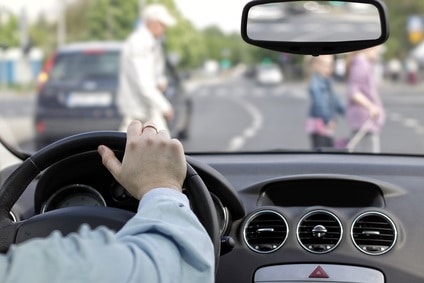
In ADAS, vision-based alerts have occupied a central role in assessing critical situations. Specifically for pedestrian detection, visual information is critical to distinguish humans from other moving objects on the road. The actual detection of pedestrians do not necessarily requires a full extraction of human features, but rather the recognition that an object is human. However, for intention prediction, contextual information with pedestrian models should be incorporated.
Automated pedestrian detection
Owing to complex environment and the variety of situations to be analyzed, deterministic computer algorithms are prone to many false positive detection. Since the response of ADAS to a false positive detection might lead to grave consequences, reduction of erroneous detection to its minimum is posed as a strict demand of performance. A much better solution is offered by algorithms based on machine learning, which have been shown to be far more robust.
To utilize such robust machine learning, coupled with computer vision methodologies, we suggest to employ a cascade of classifiers. Each classifier is trained to model a different body part of pedestrians, given a candidate target. The targets are detected using state-of-the-art algorithms based on histogram of gradient and Haar-like features. These methodologies have been shown previously to be able to operate in real-time, as fit for the fast response time required by ADAS.
The recognition of a candidate object as a pedestrian is done by majority vote of several classifiers. Imposing strict threshold value on the outcome enables to restrict the levels of false positive detections. The adjustment of recognition values is important when contextual information can be integrated into the system. For example, driving in urban vs rural roads does not require the same level of alert. Localization of the car in either of these environment can thus be used to dynamically adjust the alert levels in ADAS.
The implementation of a cascade of learning and classifying techniques for automated pedestrian detection in complex environment requires care. Safety regulation would not permit the integration of a system with high level of inaccuracy, especially when pedestrians’ lives are at stake. For these reasons, real expertise in planning construction and implementation of machine learning and computer vision techniques is essentials. RSIP Vision is a leading expert in computer vision an machine learning algorithms. Read more about how RSIP Vision builds its state-of-the-art machine learning and computer vision algorithms.






